L1: Plant Cell and Organelles
1/28
There's no tags or description
Looks like no tags are added yet.
Name | Mastery | Learn | Test | Matching | Spaced |
|---|
No study sessions yet.
29 Terms
Plant cell compartments
All plant cells have the same basic organisation including:
cytoplasm
nucleus
organelles
Plasma membrane
Cell wall
What are the two main categories of organelles in plants?
Endomembrane system and peroxisomes
Semiautonomous organelles (independently dividing) i.e mitochondria and plastids (chloroplasts)
Endomembrane system consists of…
• Endoplasmic reticulum
• Nuclear envelope (encapsulates the nucleus)
• Golgi apparatus
• Trans Golgi network
• Vacuoles
• Endosomes
• Oil bodies
• Peroxisomes and gloxysomes
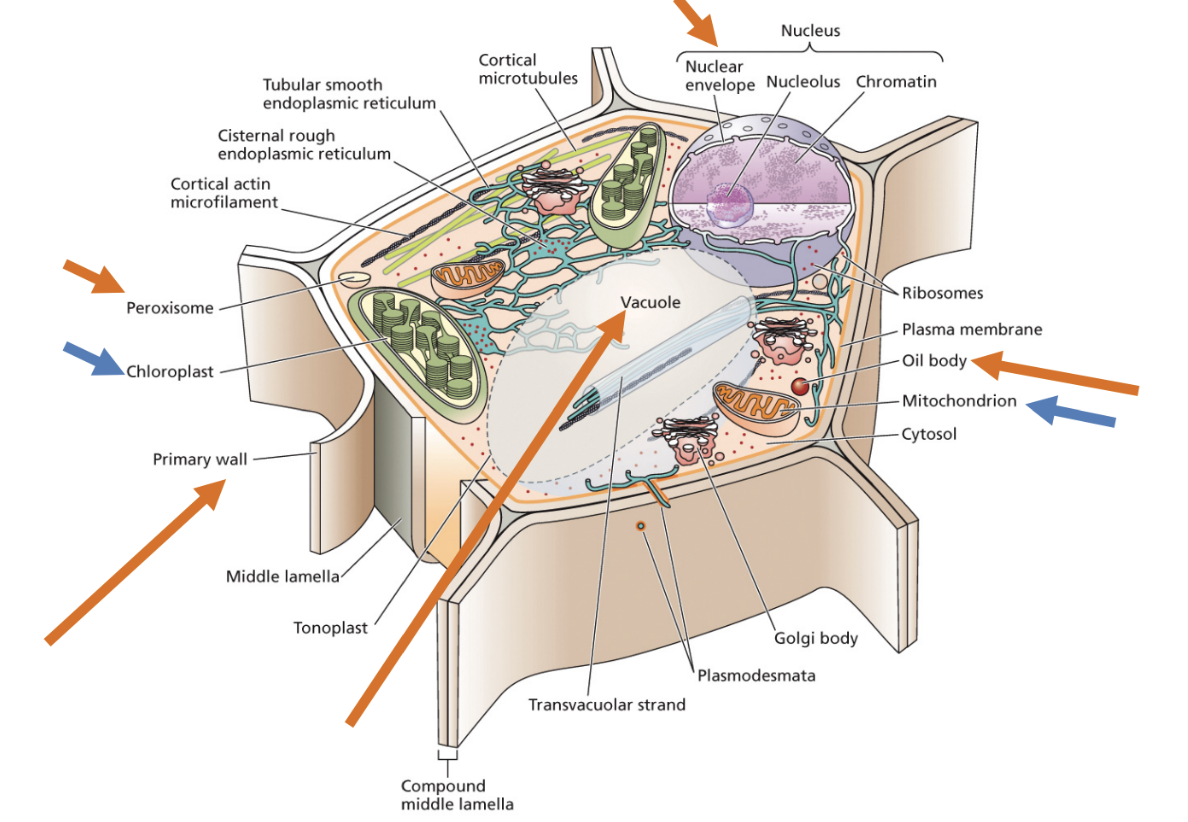
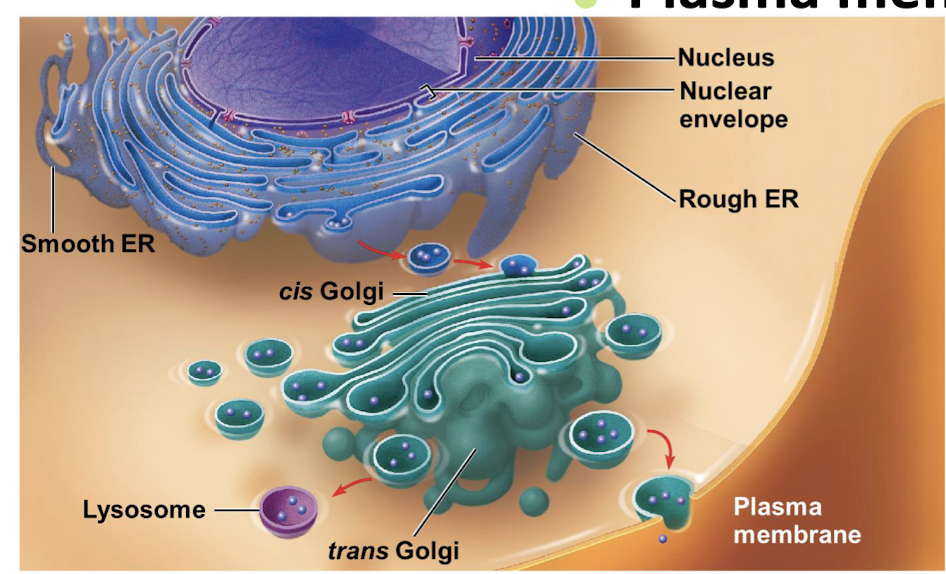
What is the function of the endomembrane system?
acts as a 'factory' of the cell to create and modify proteins + lipids, deliver material to the outside of cells through secretion, and internalise nutrients through endocytosis.
*Compartmentalisation increases efficiency & allows for specialised functionality in cellular processes, improving overall cell function.
Semiautonomous organelles
Organelles that can divide independently of the cell, such as mitochondria and chloroplasts.
Golgi apparatus function
protein modification + transport:
Receives newly synthesized proteins from the ER and modifies them by:
• proteolysis
• amino acid modification (eg: hydroxylation)
• modifying their carbohydrate chains
• Sorts and ships materials into transport vesicles
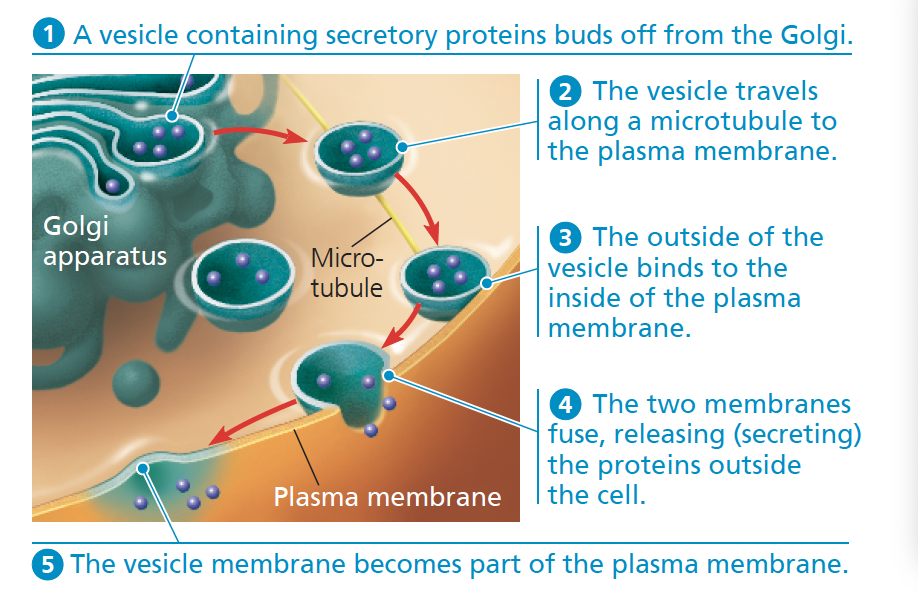
what makes the cell wall of a plant different to animal cells?
Plant cells aren’t able to migrate from one location to another versus animal cells, where embryonic cells can migrate from one location to another – developing tissues and organs may contain cells from different parts of the organism
The plant cell wall is primarily composed of cellulose, providing structure and rigidity, which prevents migration unlike animal cells.
what are the 4 key functions of the plant cell wall?
1. Responsible for adhesion between cells to enable tissue integrity and defence.
2. Mechanically strong layer encapsulating the cell:
• Controls cell shape and allows high turgor pressures
• Mechanical strength allows plants to grow to great heights
• Resist collapse of xylem
3. Diffusion barrier
4. Major structural and chemical barrier to invasion and spread of pathogens
Primary cell walls
Typically less than 1µm thick
Characteristic of young, growing cells
Thin, flexible, and extensible
Made of cellulose, hemicellulose, and pectin
Found away from the plasma membrane, which allows for cell expansion.
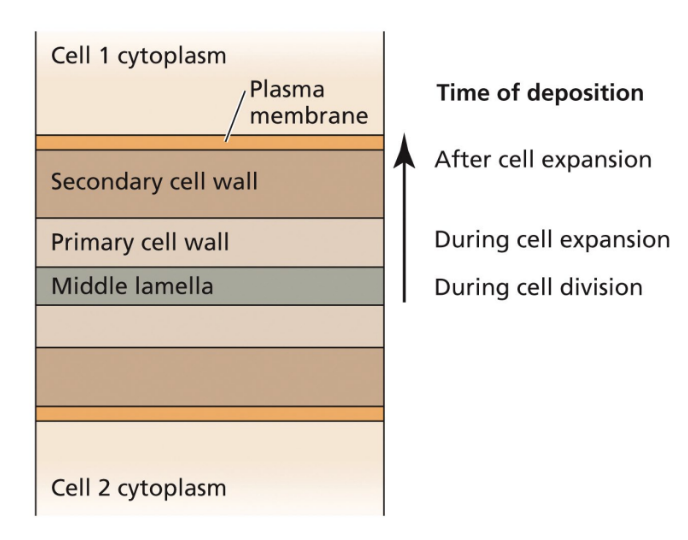
Secondary cell walls
The innermost layer is lignin-rich which is thicker and stronger than primary CW
Deposited on the inner surface of primary cell walls after cell enlargement.
Function:
Provides extra strength and support, especially in wood and xylem cells
Makes cells more waterproof and durable
✅ Mnemonic: "Secondary = Stronger and Stiffer"
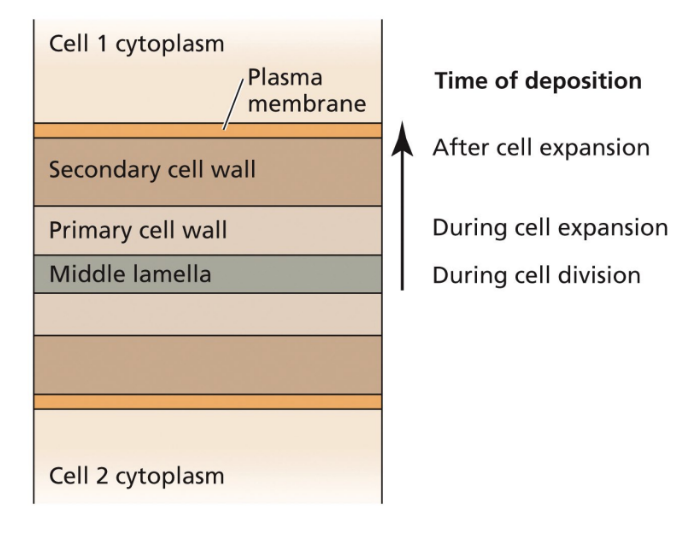
Middle lamella
The outermost layer of the plant cell wall
Pectin-rich (used in jam-making) found in between adjacent plant cells
1st layer to be deposited during cell plate formation in cell division
Responsible for cell adhesion and acts as a glue between adjacent plant cells, preventing cell sliding, slippage, and motility.

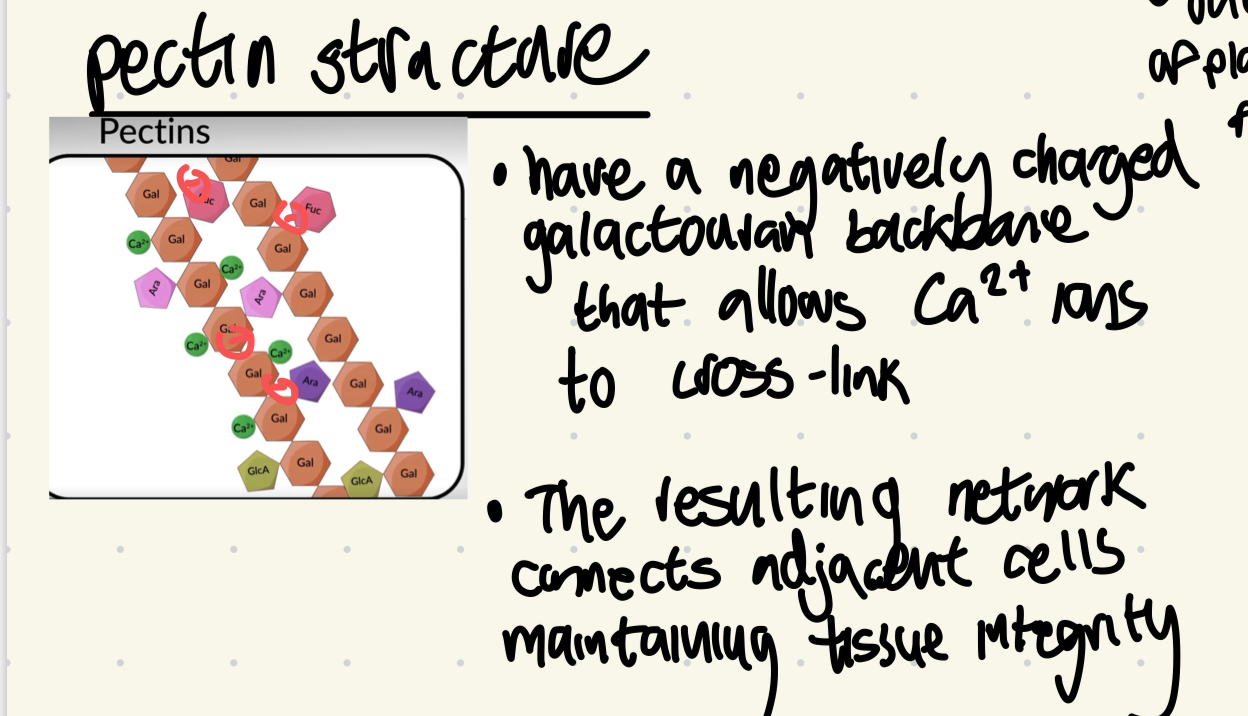
Plasmodesmata + function
Tubular structures formed by the PM of adjacent cells that connect the cytoplasm of neighbouring plant cells,
They allow communication and transport by facilitating the exchange of water, nutrients, and signalling molecules
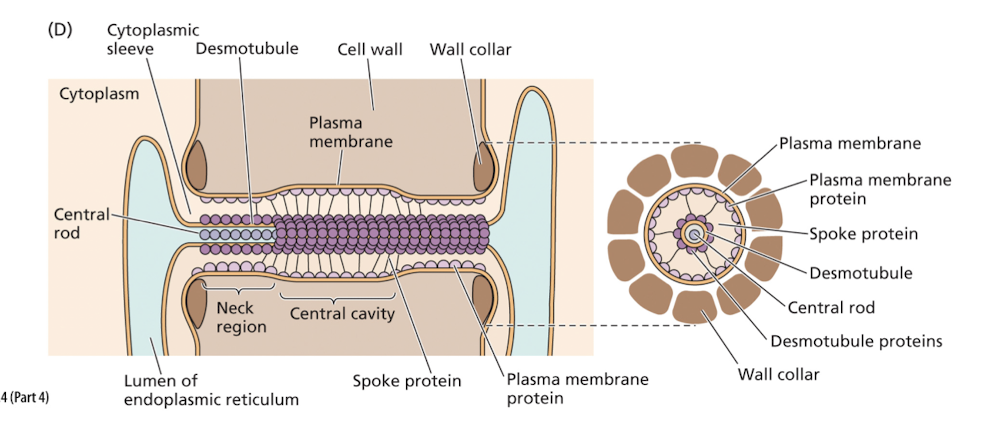
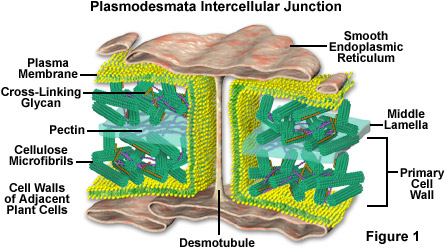
primary plasmodesmata form _____________ and secondary plasmodesmata form ________
during cell division; from pre-existing plasmodesmata after cells have divided
what is the desmotubule + symplasm?
The core of the plasmodesma is the desmotubule
• The desmotubule is derived from the endomembrane system of adjoining cells
• Plant cells interconnected by plasmodesmata form a continuous cytoplasmic space – symplasm
Transport through the plasmodesmata is known as _________
Symplastic transport
• Substances that are transported via the symplasm include water, solutes, and macromolecules (e.g., proteins), and even viruses
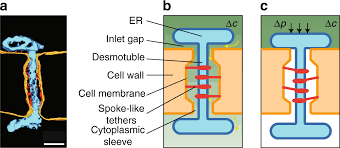
how do plasmodesmata regulate transport?
There is a size exclusion limit that can vary depending on cell type, environmental conditions, and developmental stage of the plant.
• Transport through the plasmodesmata can be regulated/gated by:
• Deposition of callose (closure of plasmodesmata) - only water and small molecules can enter
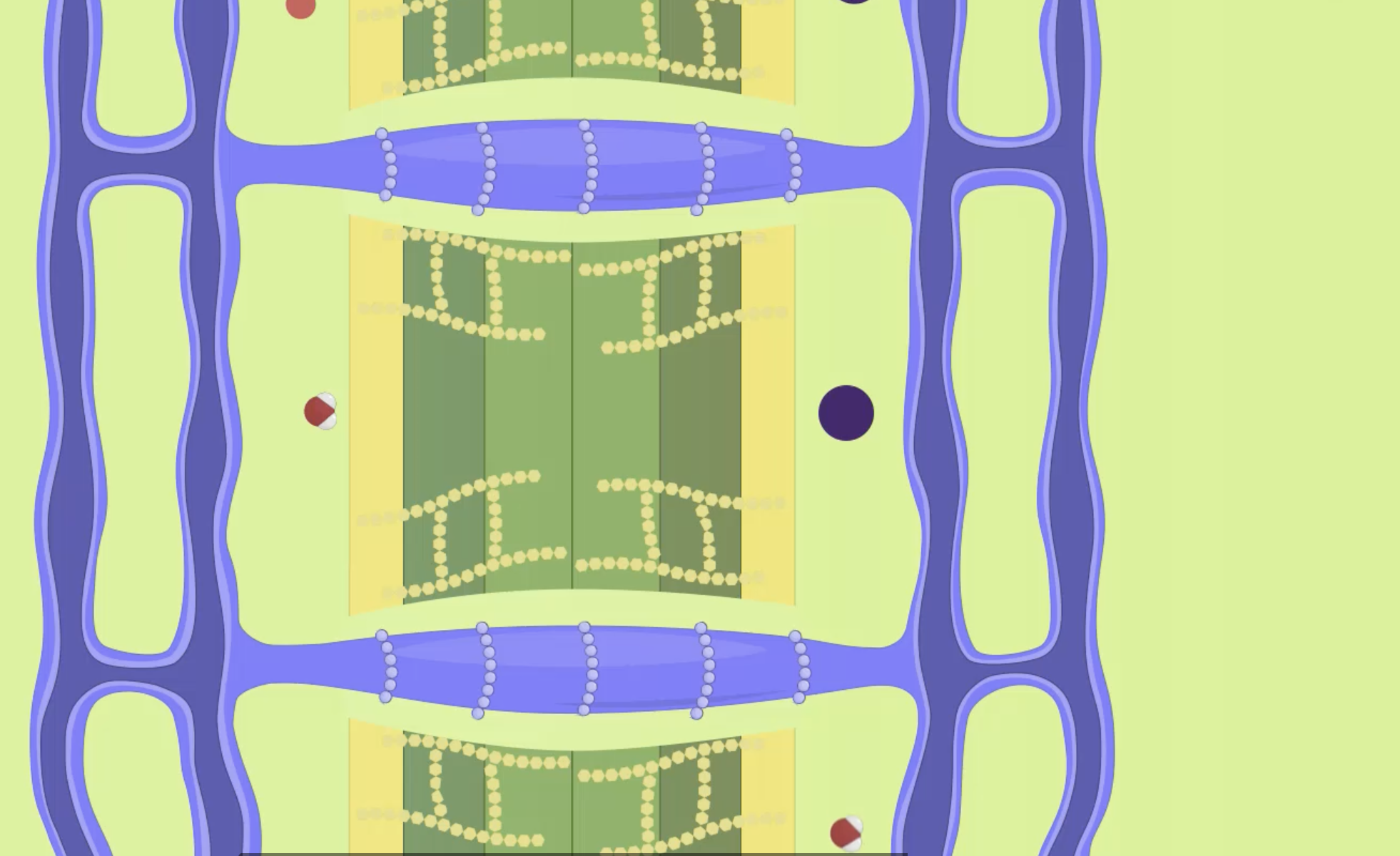
• Degradation of callose (opening of plasmodesmata) - channel is dilated and larger molecules can pass through
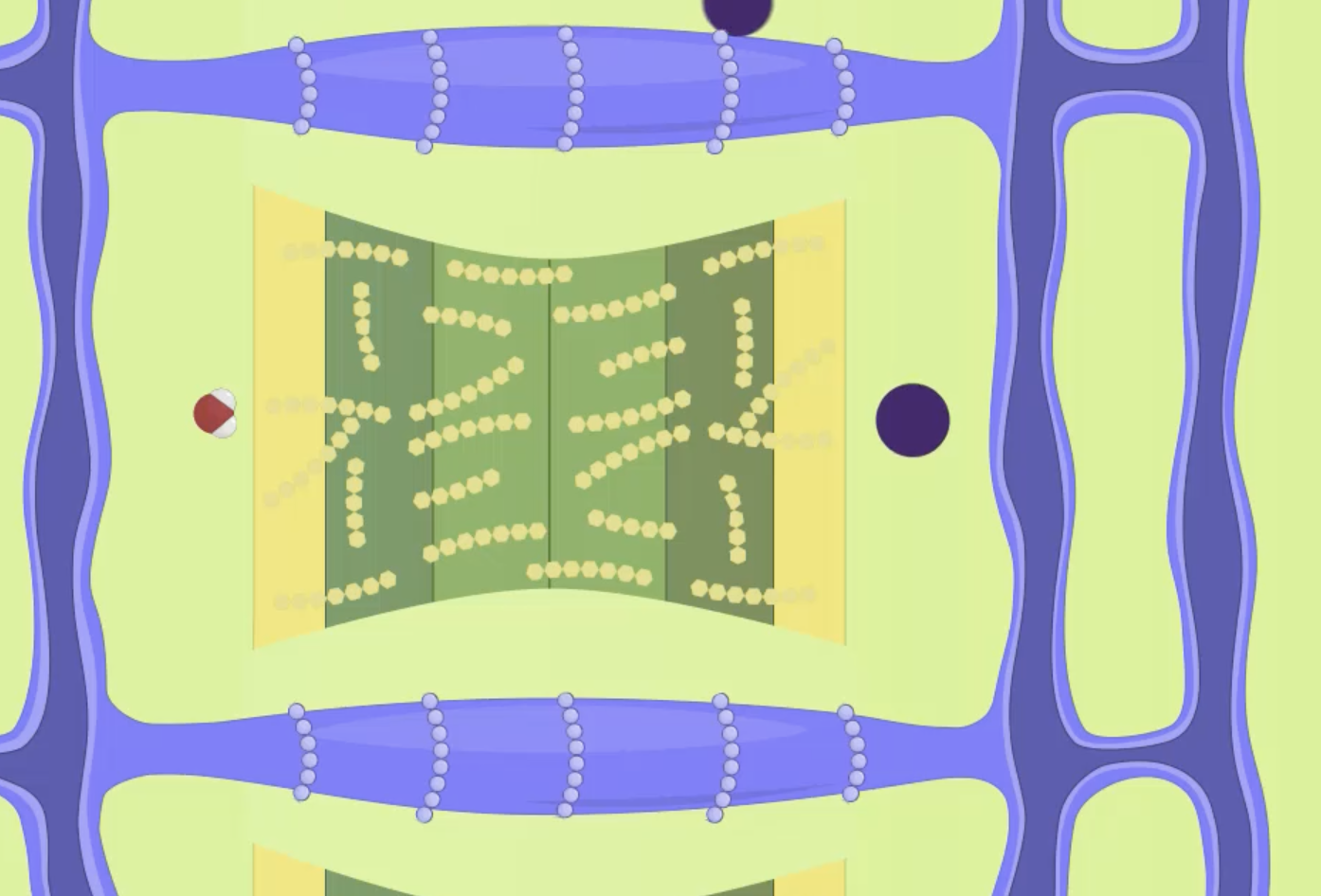
how do viruses increase the size exclusion limit of plasmodesmata?
Viruses can encode viral movement proteins that modify the structure of plasmodesmata, allowing for the spread of the virus throughout the plant via the symplasm
This alteration facilitates their movement between plant cells.
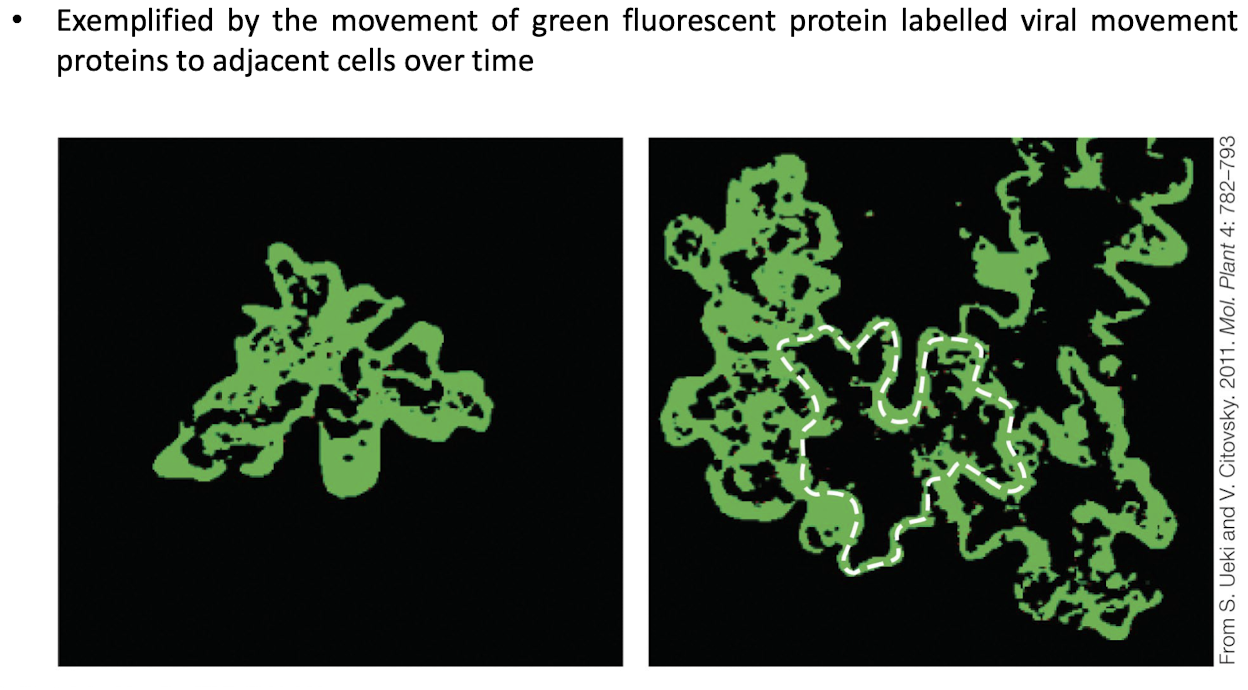
What is the function of the nuclear envelope and nuclear pores
A double membrane surrounding the nucleus, continuous to the ER and containing nuclear pores which act as a supramolecular sieve, allowing the transport of molecules into and out of the nucleus & connects the nucleoplasm with the cytoplasm.
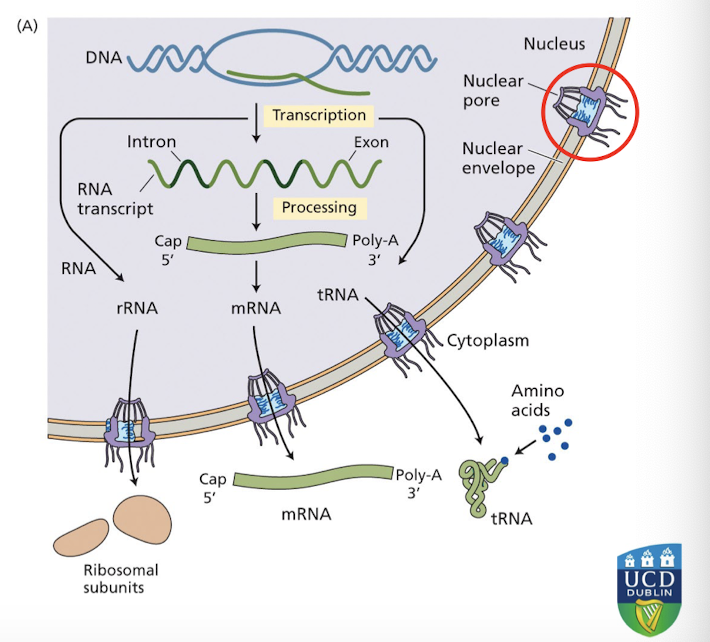
what is required for certain proteins to be transported into the nucleus from the cytoplasm?
Nuclear localisation signals (NLS) are specific amino acid sequences that are a part of the protein that direct the protein to the nuclear pores for import into the nucleus.
Importins recognise and bind to NLS of cargo proteins, facilitating the transport of proteins into the nucleus.
RNA transcribed in the nucleus and cytoplasmic proteins have nuclear export sequences that tag them for release through the nuclear pores.
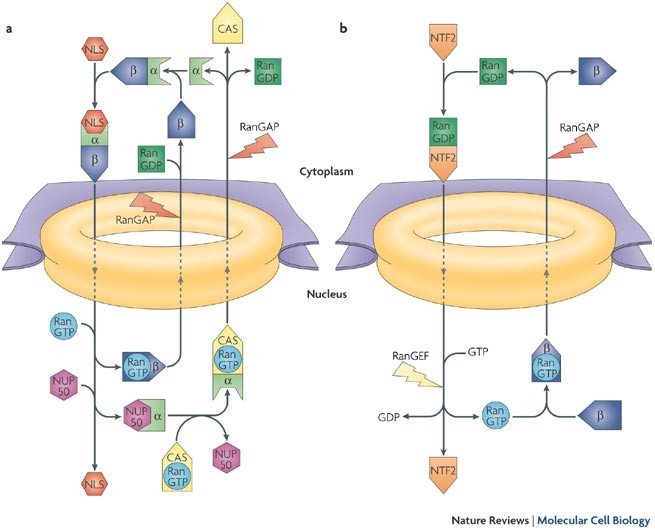
what are vacuoles and what are the 2 types of vacuoles?
An organelle enclosed by a membrane (tonoplast / vacuolar membrane), responsible for storage of inorganic ions, sugars, organic acids, pigments, osmoregulation, and cell expansion & signalling in plant cells, xenobiotic disposal
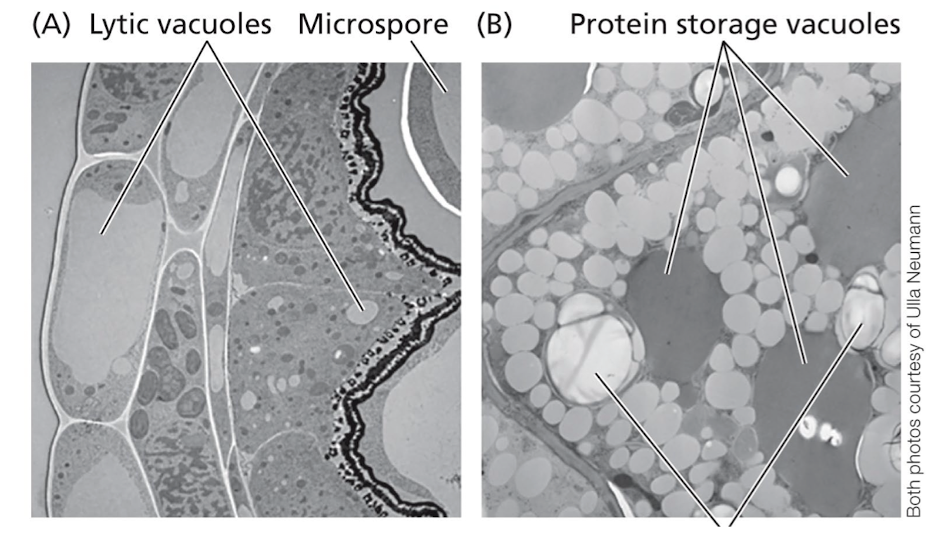
The vacuolar sap is composed of water and solutes with an acidic pH (< 5.5)
• Generally, vacuoles are small in size in meristematic cells – they increase in size during cell elongation and maturation
what is the function of a plant's central vacuole?
Mature plant cells generally contain a large central vacuole which develops by the coalescence of smaller vacuoles.
The solution inside the CV is called vacuolar sap, which is the plant cell’s main repository of inorganic ions, including K+ , Cl-
Plays a major role in the growth of plant cells as the vacuole absorbs water, it allows the cell to enlarge with a minimal investment in new cytoplasm.

what is xenobiotic disposal?
The process by which vacuoles in plant cells sequester and eliminate harmful foreign substances or toxins, helping to maintain cellular homeostasis.
Lytic vacuoles are found in ___________ and protein storage vacuoles are found in ______________
vegetative plant cells; developing seeds
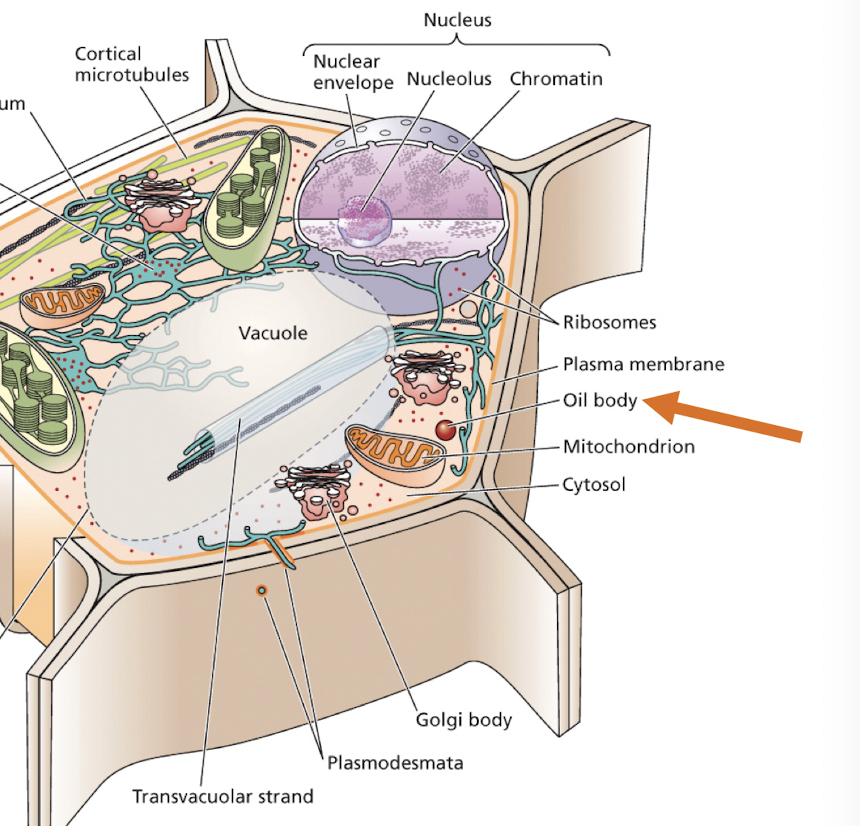
Oil bodies
Lipid-storage organelles in plants that accumulate oils (triacylglycerols) during seed development.
Surrounded by a half-unit membrane composed of a phospholipid monolayer derived from the ER
Stabilised by proteins called oleosins, which prevent coalescence and maintain the integrity of the oil bodies.
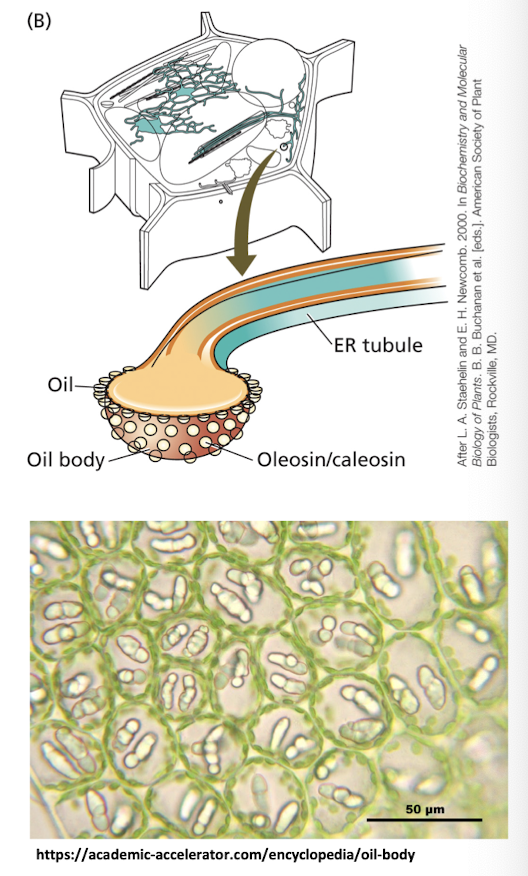
Peroxisomes
Organelles that detoxify reactive oxygen species using catalase and are involved in metabolic processes.
- have a crystalline core (dense collection of enzyme molecules) + are membrane bound specialised metabolic compartments
- break down organic molecules by oxidation producing hydrogen peroxide (H2O2)
-Catalase decomposes H2O2 by converting it to H2O by using it to oxidise another organic compound (peroxidation reaction).
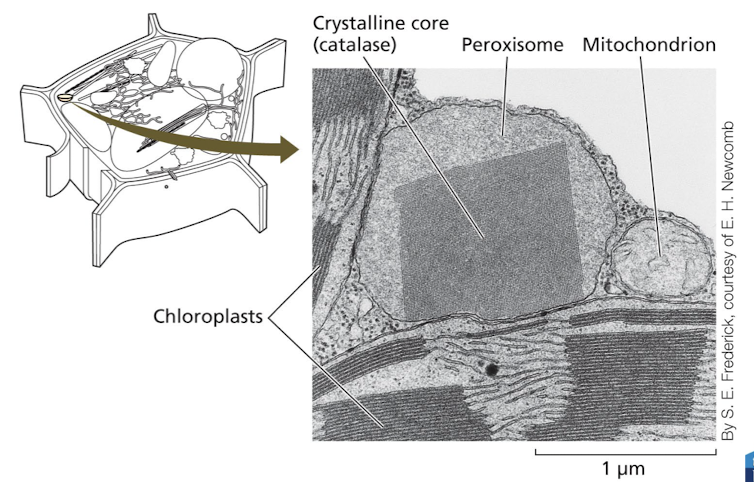
A specialised class of peroxisomes, called ________ are responsible for
metabolising ________ in germinating seeds (in animal cells they catalyse the _______________)
glyoxysomes, glyoxylate, β-oxidation of fatty acids in mitochondria
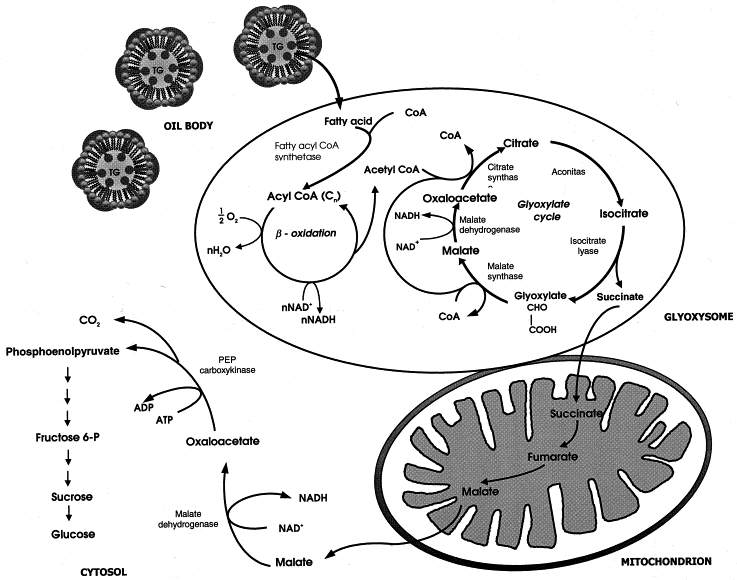
Symplastic transport
Transport of substances through the cytoplasmic connections created by plasmodesmata.
Callose
A polysaccharide that can be deposited in plasmodesmata, affecting their opening and closing.

Catalase
An enzyme found in peroxisomes that detoxifies reactive oxygen species.